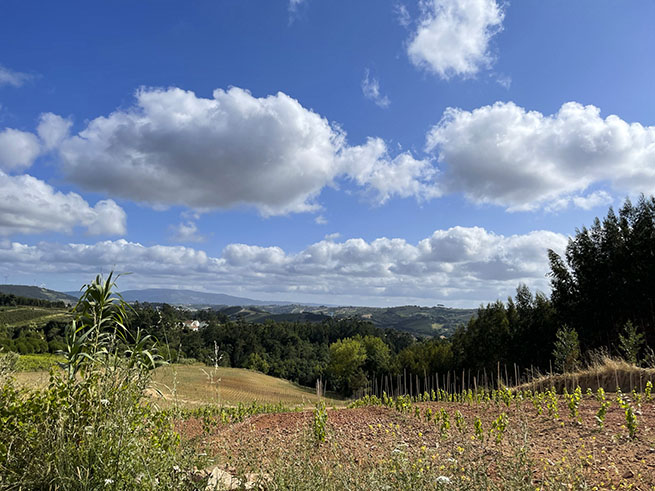
Fatso house
You are lined up for a technical explanation. What is the use of a warm winter coat in the summer? I almost feel sorry for our building, as it is wrapped up so solidly. But there is a reason. A thick coat keeps the heat out in the summer, and the cold in the winter.
Climate change
We should all work very hard on the protection of our earth. Everyone does his or her share and all will be fine, won’t it? But temperatures are rising. Weather forecasts predict more and more extremes. Rain clouds keep emptying their pockets and throw immense herds of cats and dogs down on us. Areas are washed away because of deforestation. Because we interfere with the natural watercourse, areas adjacent to rivers keep flooding. Super wealthy ego’s send their toy rockets in the direction of the moon. Polar bears become land bears. And we keep buying more and more things. Things we don’t need. Enough worries to keep you awake at night.
What Mother Nature provides
Therefore, in our building we feel obliged to make use of what is provided for by Mother Nature. We will use solar energy, cork, certified hardwood, natural stone from a nearby mountain, clay pebbles. And all these efforts are expensive. The investment you have to make to live partially ‘off the grid’ will be recouped in the coming years. So we will not have to lean too much on the normal power net. And use the ‘off the grid’ – electricity for our luxury life, with a somewhat more clear conscience.
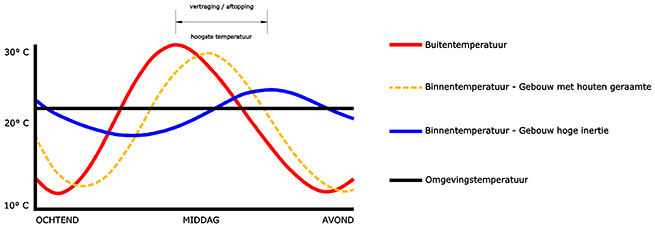
Thermal inertion
Inertion means slow. Thermal inertion means that the climate inside your house is reacting slowly on the temperature changes outside. A badly insulated house quickly feels cold in the winter, and quickly warm in the summer. So you need to react with a lot of heating or air-conditioning to keep a comfortable climate inside. A well insulated house is much less (quickly) affected by temperature changes outside. Because of the warm coat it takes more time for warmth or cold to reach the inside of the house. Therefore it will take longer before you have to heat up or cool down.
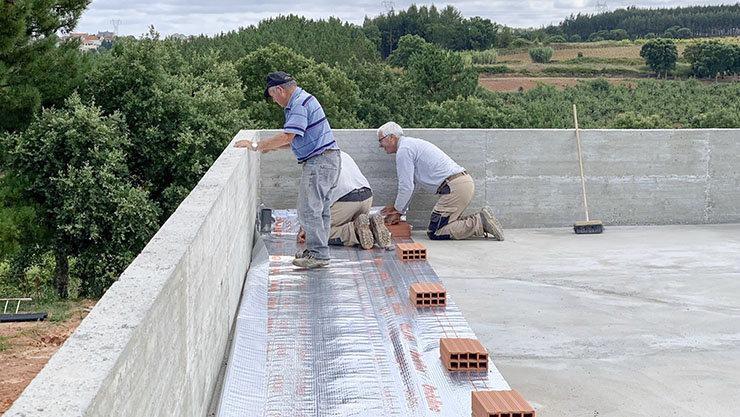
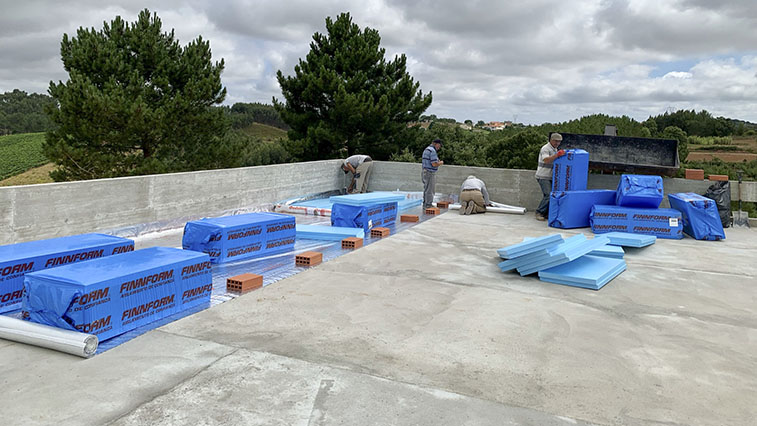
Wrap up
The roof was constructed from concrete beams and buns, and then covered with a layer of concrete. On top of that, a mixture of concrete and Leca was used to also create a gradient flow on the roof. Now a layer of damp-proof foil is spread out, followed by the blue plates of XPS, another insulating material. To cover that and keep it at its place, a thin layer of mortar mixed with glass fiber is spread out very evenly. And then we have to wait for the ‘Men from Braga’ that will cover up the whole roof with EPDM, as a finishing touch. EPDM is an elastic layer, that moves with the fluctuations in temperature. It’s a UV-resistant and has a very long lifespan. A sustainable and environment friendly roofing. All together a true Fatso of a roof!
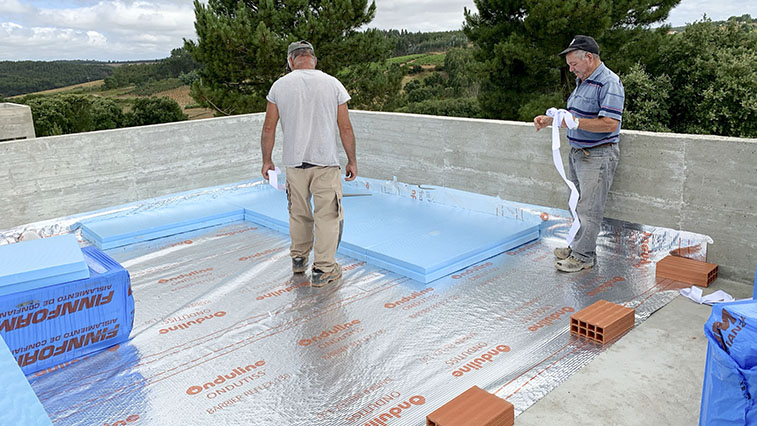
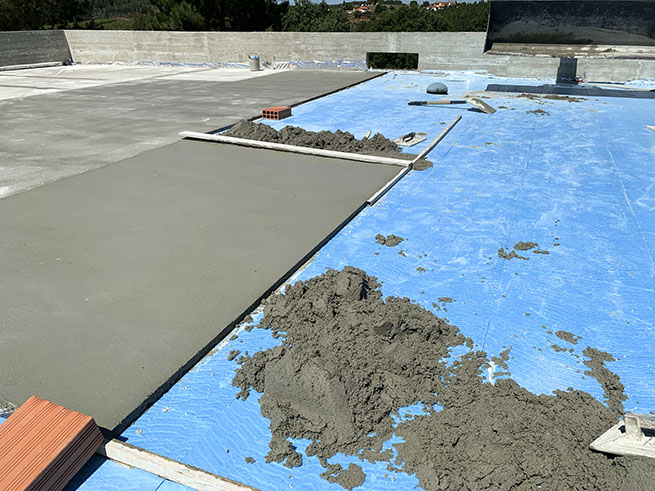
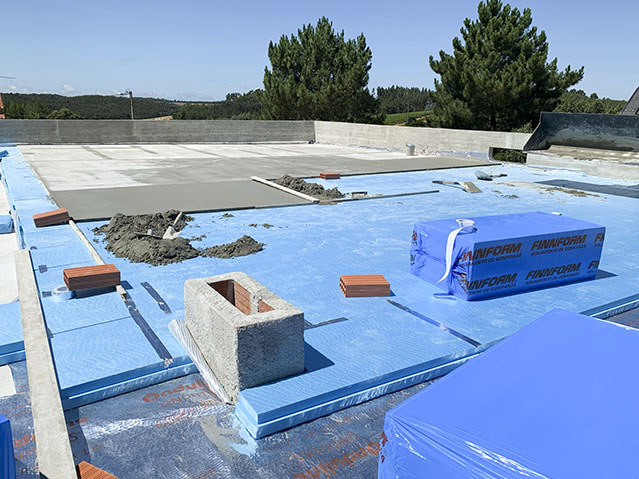
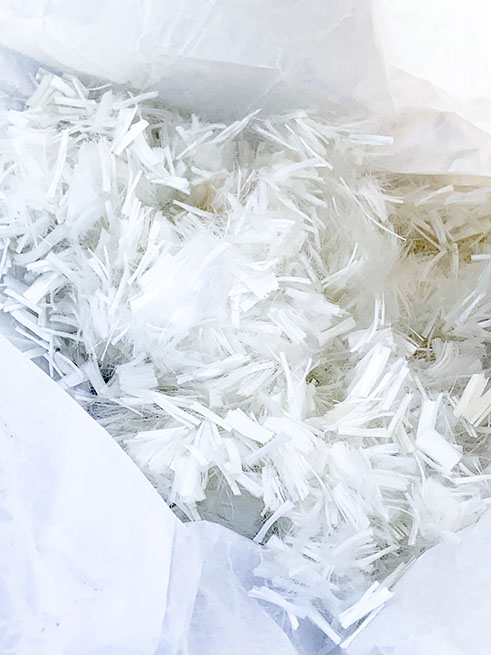
Wow, this is a lot of prep to keep the temp stable. I am not sure why you have to do all of this. In the USA houses have a roof. Made of plywood, with wood shingles on top and inside just insulation. We have very cold windy snowy days rainy days and all is well. Most houses here have electric or gas heating and air conditioners inthe summer. Is it that your house won’t have heating and air? It is going to be beautiful when you finish!